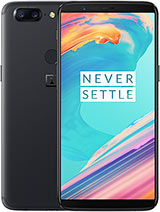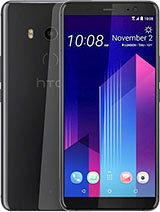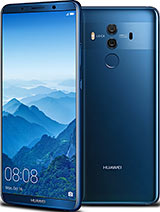LG V30 review: All screen
All screen

Wrapping it up
The V10 was big, heavy, and rubbery, the V20 was still big, and metal-clad, and both had secondary displays in the top right corner. The V30 is light, compact, and has a single display that leaves little room for anything else on the front. Talk about continuity.
You could argue that the V30 is what the G6 should have been, and you may well have a point. But just because it turns its back on most things 'V', doesn't mean it's not staying true to LG, and that's got to be more important.

There's the dual camera, yet another iteration of it - the one-time LG left it unchanged was between the G5 and V20 and we now have version 3. The specs are for the marketing team to work with but in the end, the V30's primary shooter takes great pictures with its 1/6 of a stop brighter lens than the competition.
In the top tier, the ultra wide-angle cam is still only found on LG phones while others are exploring telephoto/portrait/bokeh modes or black and white photography. Kudos to LG for further refining it, even though no one is actually competing with them on this one (a fact that at least one reviewer over here can't seem to grasp).
The OLED display reenters LG's phone lineup after last making an appearance on the G Flex2 some three years ago. So there, the V30 is staying true to LG. And even if the V30's screen isn't quite up there with Samsung's Super AMOLEDs, it's pretty close.
Battery life turned out quite good, with final firmware adding precious minutes where needed, and taking some where there was plenty to spare. Superb voice call and video playback longevity are complemented by decent numbers when browsing the web making for a solid overall result.
LG V30 key test findings
- Design looks a bit like a Samsung, but the V30 is still a premium glass and aluminum device. It's also impressively light for what it has inside. The introduction of dust and water resistance is welcome, even if it's cost the V30 a removable battery.
- The P-OLED display can be as bright as the best AMOLEDs in Auto mode, and posts great contrast readings in direct sunlight - better than all LCDs, not as high as the best AMOLEDs. Reasonable color accuracy can be achieved too, if that's your thing (average DeltaE of 3.8).
- As is common with phones with OLED displays, video playback is much easier on the V30's battery than web browsing. 9:30h of scrolling the web is still alright, while 15 hours of looping videos is downright awesome. And on the off chance that you decide to have a 33-hour long call, the V30 can handle it as well.
- The user interface is mostly the same as on the G6 - app drawer or no app drawer, customizable nav bar, entirely custom settings menu, colorful icons and theming support. The one thing that sets it apart is the floating bar - a mix of the now-gone secondary display and Samsung's Edge panels - a mix you could disable and never miss.
- Benchmark scores are consistently a few percent behind the competition - not really an issue, but not looking good either. It's still top-tier hardware delivering top-tier performance
- In our loudspeaker test the V30 scored a 'Very good' rating - louder than both the V20 and the G6.
- Image quality from the main camera in good light is superb: a lot of detail, low noise, pleasing colors. In low light it's a slightly different story, with the V30 missing focus on occasion and exhibiting an overall softness. It's still a decent performer and especially so when you account for its miniature pixels.
- The ultra wide-angle cam now has less distortion and a marginally narrower field of view, but is otherwise similar in characteristics to previous versions - it's not tack sharp on a pixel level, but you need to look at the whole picture to appreciate it.
- 4K and 1080p/30fps videos out of the primary camera are top-notch - a little noisier than on the G6, but with slightly more detail and arguably better colors. 1080p/60fps is best avoided. Cine video is fun to play with, though its best use is perhaps the flat profile, which you can later grade as you wish.
Noteworthy alternatives
Back in the days of the V10 and V20, we'd say that top of this list should be the current Samsung Galaxy Note. Well, no, not with the V30. It's your choice of Galaxy S8 or S8+ mostly depending on where you stand on pocketability. The S8 proper will get you the most of that - its narrow body is the easiest to manage single-handedly. The S8+'s battery should last you the most if your usage leans towards web browsing. The V30 has two cameras on the back. The S8 is the most affordable, but give the V30 a couple of months, and it could get there.
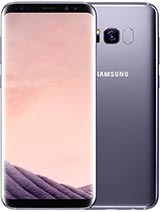
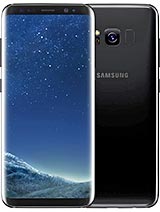
Samsung Galaxy S8+ • Samsung Galaxy S8
You could, of course, opt for the G6 and that'll net you a similarly performing dual camera at a fraction of the price of a V30. Well, the G6's chipset isn't as powerful, and battery life is actually mostly worse, but you can't really beat the G6 in the bang for buck metric.
OnePlus' upgraded 5T now offers a 6-inch 18:9 display and still features a lot more RAM than the V30. OP's latest lacks water resistance and a memory slot, and its dual camera is tough to recommend. It's substantially cheaper, though.
HTC hopped on the tall screen bandwagon with the U11+. Maybe not as affordable as the OP, but still cheaper than the V30, the HTC U11+ has a lot going for it - just one camera, but a pretty amazing one, stereo speakers with a lot of Boom, a higher-res selfie cam. The U11+'s display is dimmer than the V30's, battery life isn't as good overall, and the HTC's shiny back could be either a pro or a con, depending on your personal taste.
The Nokia 8 packs three 13MP cameras and it can even shoot 4K video with the front one. It can also take monochrome stills, while the V30 can do neither. The V30 has the ultra-wide-angle cam on its side, better protection against the elements, a lot more display in the same-sized body. Once again, the V30 is the more expensive phone.
The Mate 10 Pro has a dual camera of its own, a color+monochrome setup vs. the V30's normal+ultra wide - each phone takes great photos, it's just that one can do black and white, the other is into odd perspectives. This alone can settle it for some but there are other bits too - the Mate has a higher-res selfie cam, and its battery will last you much longer in web browsing, but the V30 has the sharper display - 1440p vs. 1080p. There's no 3.5mm jack on the 10 Pro, no card slot, and no FM radio either - and all of these can be found on the V30.
Final verdict
The LG V30 could have easily been a G6s or something - it's that close to an incremental upgrade to the G6 and that far away from the original V-series concept. But hey, it's LG regrouping at its best and the V30 has turned out so remarkably well. It's got the most important boxes checked (one of them double-checked in a unique way) and we can see people running to the stores. Maybe not immediately - the launch prices sound quite steep, but in a couple of months that should change.
Reader comments
- Ewiase
- 04 Aug 2022
- CGH
Thats a lie mate. When it comes to camera and sound, v60 is the best LG has ever made
- Gabi
- 17 Apr 2022
- kn0
2022: I love the "snap movie" feature on LG V30. Sadly the LG V40 thru LG V60 does not have it.
- Paul
- 19 Dec 2021
- BnI
Yeah agree I have one and the battery of v30 was horrible

